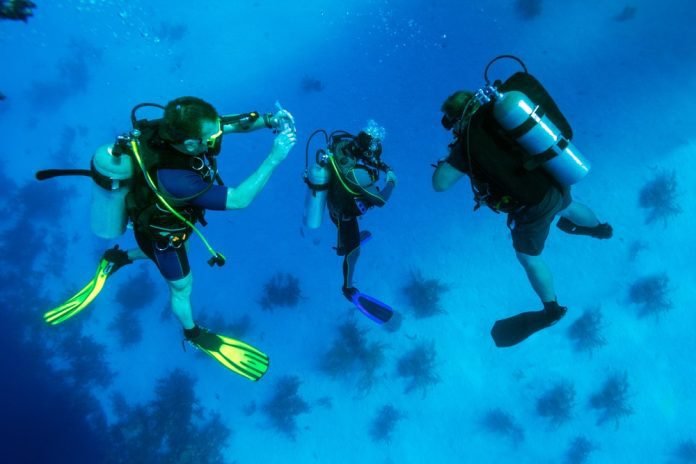Last Updated on March 30, 2024 by Umer Malik
Underwater photography is a challenging but rewarding field. If you’re interested in learning how to capture stunning images beneath the surface, consider signing up for an underwater photography course.
In addition to teaching you the basics of taking great water photography course, a good quality course will also cover topics such as seamanship, dive safety and basic first-aid. These are essential skills for any photographer, especially those venturing into the often-unpredictable world of underwater photography ocean enterprises is one of the best way to learn all over about diving and underwater photography.
Most importantly, a good course will provide you with the opportunity to practice your new skills in a safe and controlled environment. With the help of a qualified instructor, you’ll be able to get plenty of experience behind the camera before taking the plunge and heading out into the big blue.
So, if you’re interested in learning how to take amazing underwater photos, be sure to sign up for a quality course today. With a little practice, you’ll be capturing stunning images in no time!
Tips for underwater photography
Underwater photography is a special genre of photography that requires both an understanding of the specialized equipment needed as well as the proper techniques to get great results. Here are some tips to help you get started in underwater photography:
1. Invest in good quality gear. This is important whether you’re just getting started or you’re a seasoned pro. Good quality gear will not only produce better results, but it will also be more durable and withstand the rigors of diving and swimming.
2. Learn how to use your camera before you get in the water. It’s important to know how to change settings, adjust aperture and shutter speed, and so forth. Once you’re in the water, you won’t have time to fiddle with your camera and you don’t want to miss that perfect shot.
3. Take plenty of practice shots. This will help you get a feel for how the camera behaves underwater and how to best compose your shots. It’s also a good way to test out new gear and see how it works before taking it on a diving trip.
4. Be patient. Underwater photography takes time and patience to master. Don’t get discouraged if your results aren’t perfect at first – keep practicing and you’ll eventually get the hang of it!
5. Get close to your subject. The further away you are, the more water there is between you and your subject, which can distort the image. Getting close will help reduce this distortion and result in a sharper, clearer image.
6. Use a flash. A flash is vital for good underwater photography as it helps to illuminate your subject and reduce the amount of water between you and the scene.
7. Shoot in RAW format. This will give you the most flexibility when editing your photos later on.
8. Edit your photos carefully. Underwater photos often need a bit of editing to bring out their best qualities. Use photo editing software to adjust colors, contrast, saturation, and sharpness to get the look you want.
9. Share your photos with others! Show off your results and get feedback from other photographers – this is one of the best ways to improve your skills.
With these tips, you should be well on your way to taking amazing underwater photos! Keep practicing and have fun
facts about underwater photography
Underwater photography is a type of photography that involves taking pictures underwater. It can be done either by using a special camera that is waterproof, or by using a regular camera and placing it in a waterproof housing.
There are many different types of underwater photography, including wide-angle shots, close-ups, fish portraits, and wrecks. Wide-angle shots are taken with a camera that has a wide-angle lens, which allows the photographer to capture a large area in the frame. Close-ups are taken with a macro lens, which allows the photographer to get close to the subject and capture small details. Fish portraits are taken with a telephoto lens, which allows the photographer to capture the fish from a distance. Wreck photography is taken with a wide-angle lens, which allows the photographer to capture the entire wreck in the frame.
Underwater photography can be challenging, as it requires the photographer to be able to hold their breath for long periods of time and to have a good knowledge of underwater composition. However, it can also be very rewarding, as it allows the photographer to capture images that would not be possible to capture on land.
If you are interested in taking up underwater photography, there are a few things that you will need to get started. Firstly, you will need a camera that is waterproof, or a regular camera that can be placed in a waterproof housing. Secondly, you will need a wide-angle lens,
Underwater photography is a special genre of photography that requires both an understanding of the specialized equipment needed as well as the proper techniques to get great results. Here are some tips to help you get started in underwater photography:
Read More: The importance of proper breathing techniques while scuba diving.

























